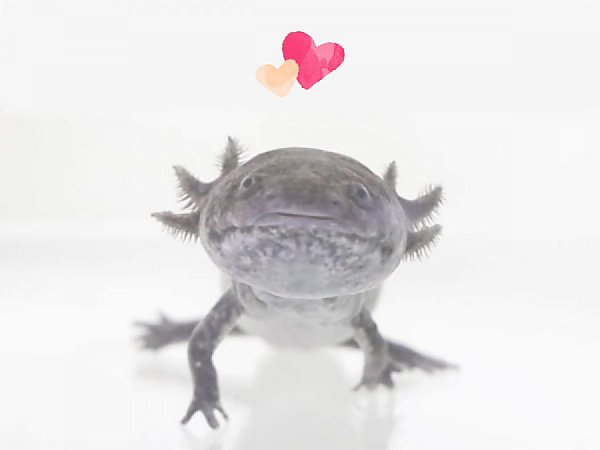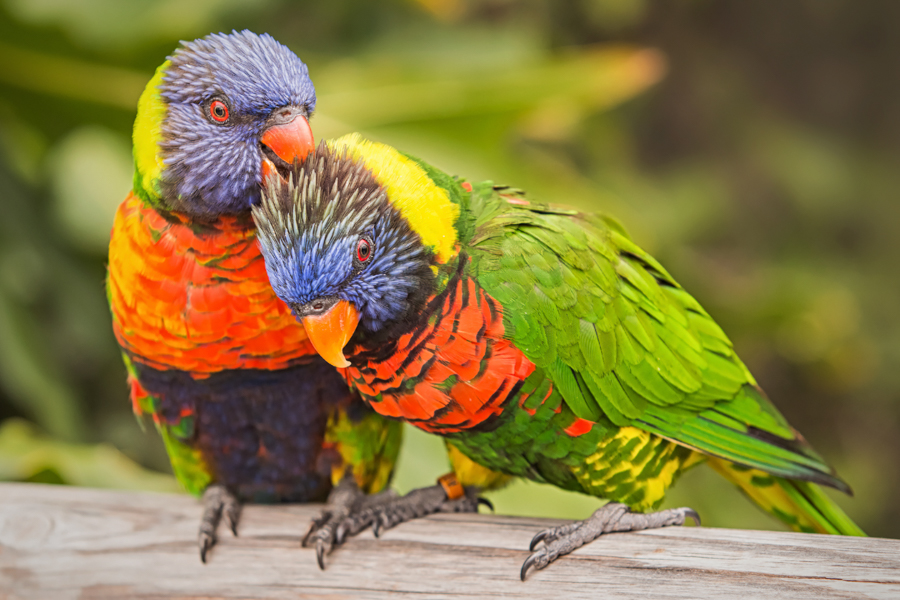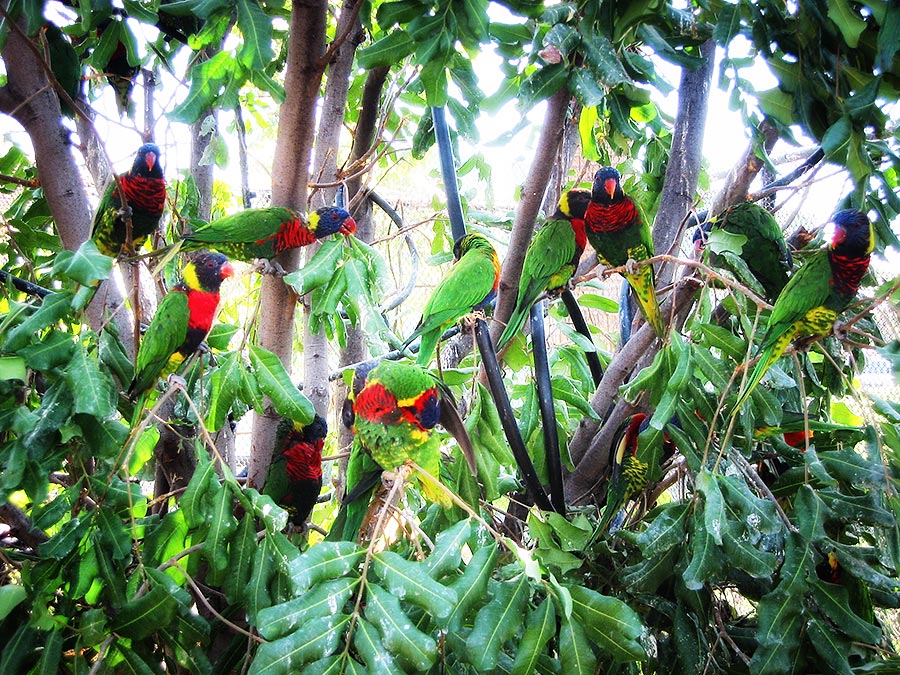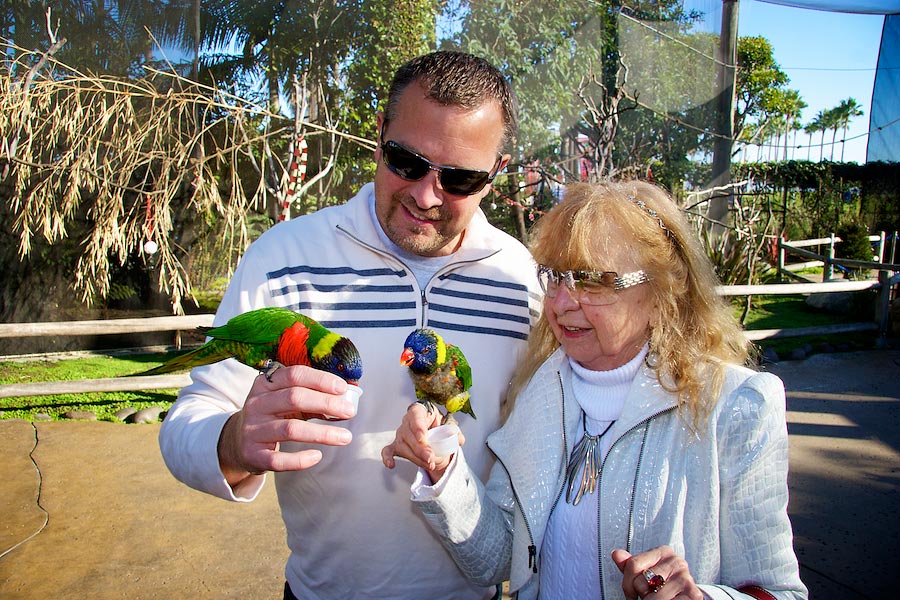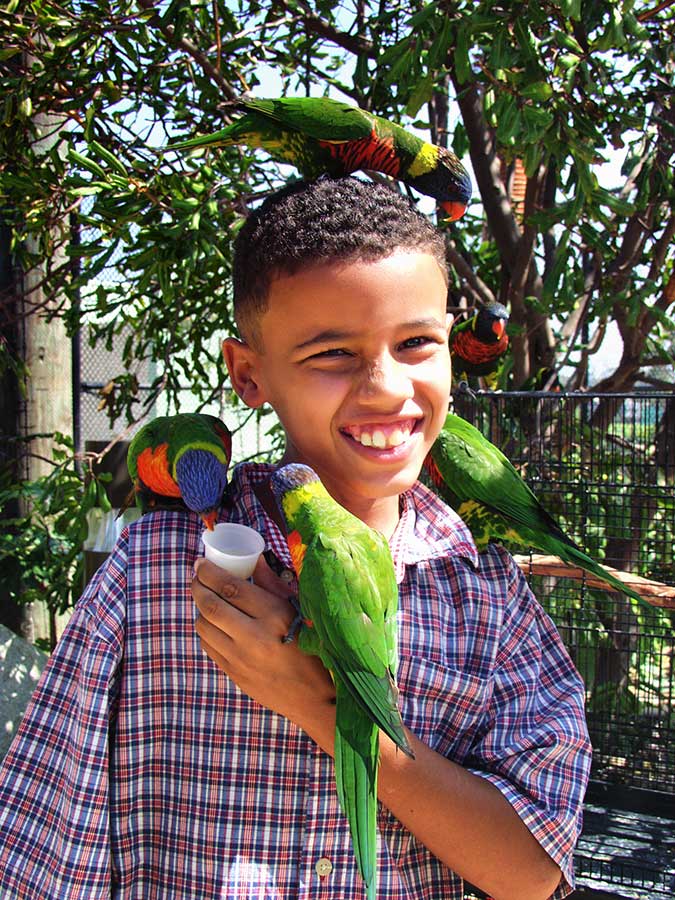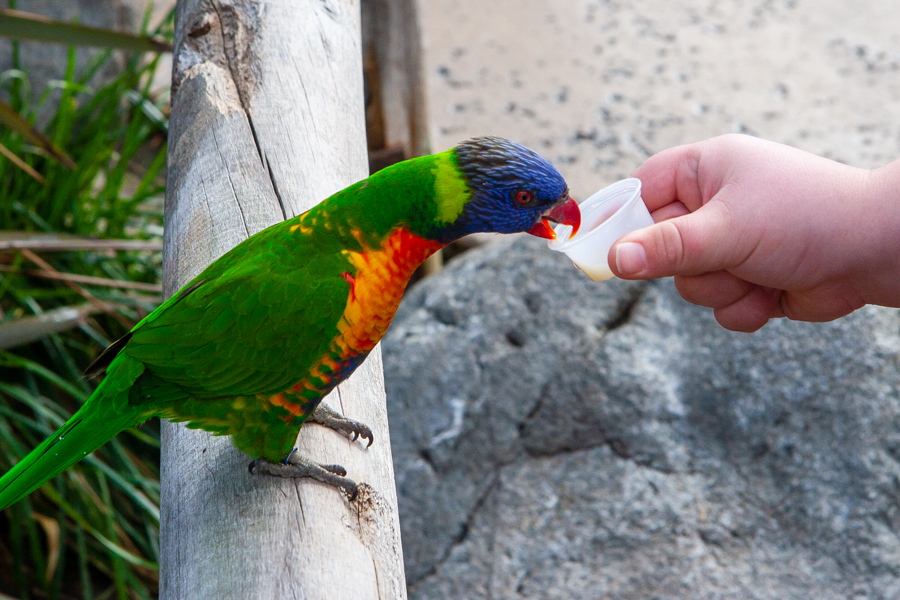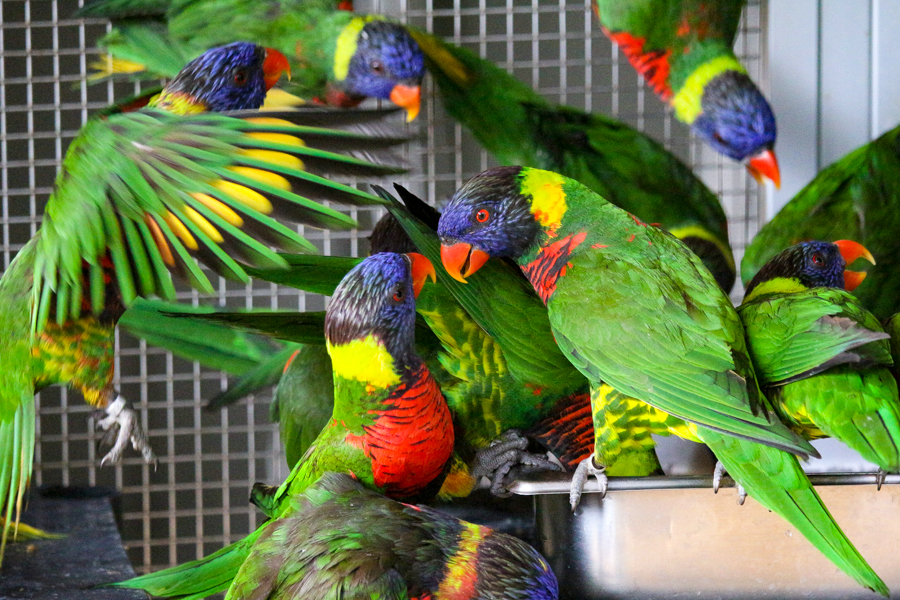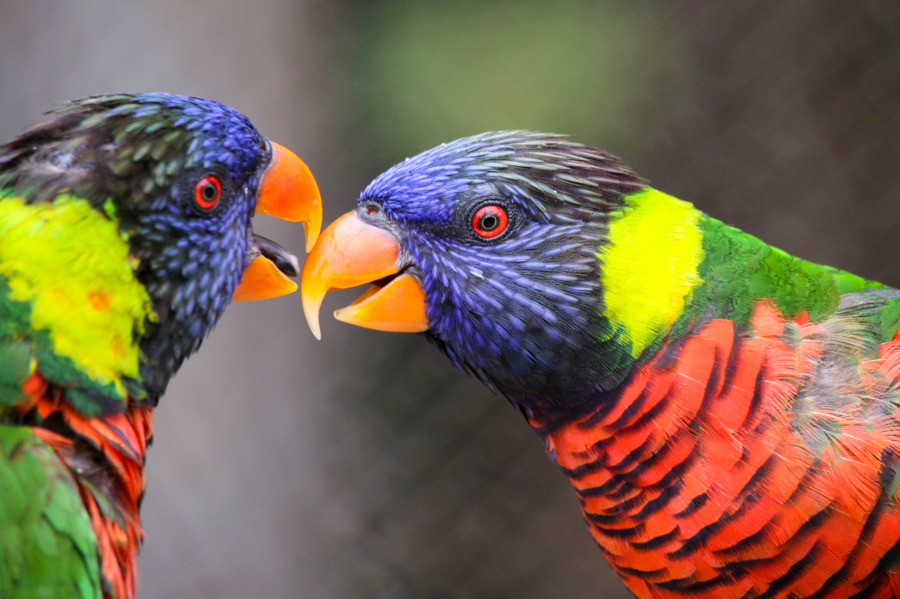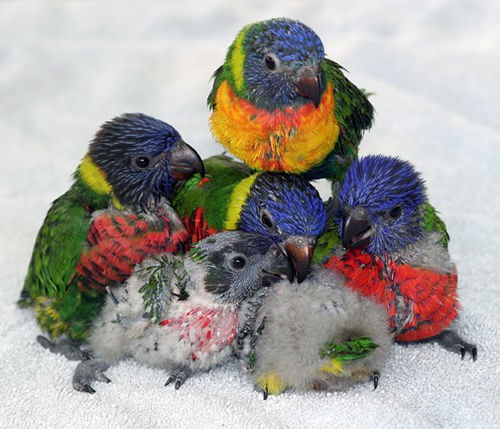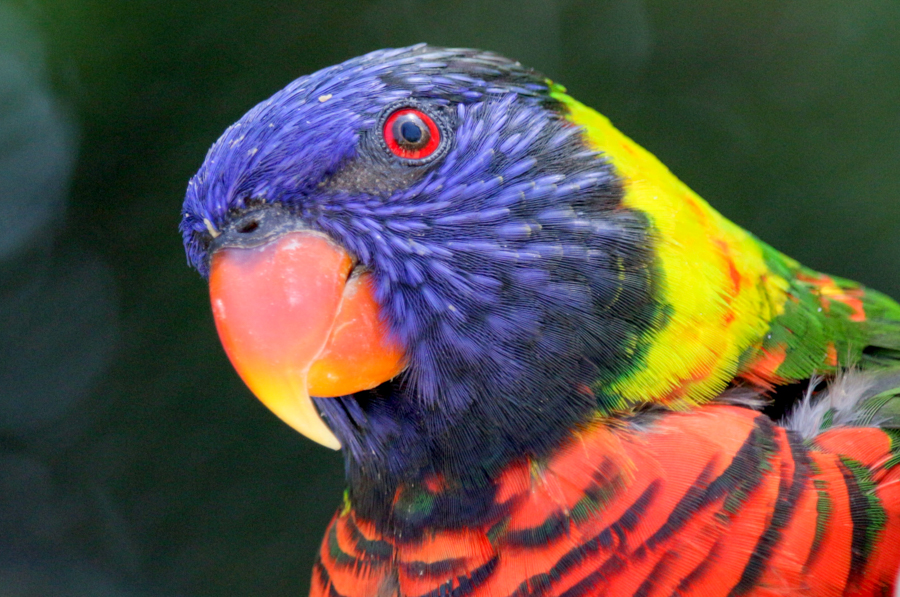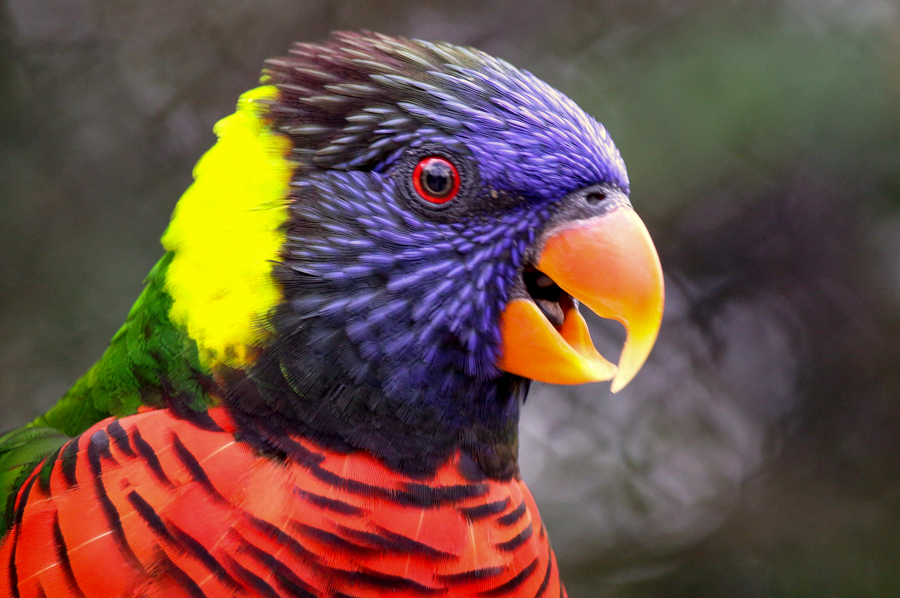Imagine walking down a winding path lined with a waterfall and trees. You hear chirping overhead. It grows louder and louder until you spot them—brilliantly colored lorikeets fill the air looking for a resting place. At last they find the perfect spot: your arm or even your head!
Transport yourself to the coastal lowlands of Australia when you enter Lorikeet Forest, a 5,400-square-foot outdoor aviary. Dozens of lively lorikeets fill the trees. Purchase a small cup of nectar, the lorikeets’ favorite food, to feed the birds as you walk through the exhibit. They will land on your hand, arm, shoulder or even your head to get a sip of sweet nectar!
Measuring approximately 10 inches in length, lorikeets exhibit a dazzling color combination, ranging from brilliant blues and greens to exquisite reds, yellows, and deep purples. When seen in full sunlight, these beautifully colored birds almost radiate an iridescent glow—a bright contrast to the thick, dark trees of their natural habitat.
The Aquarium’s Lorikeet Forest features green-naped, Edward’s, and Swainson’s lorikeets.
Lorikeets spend approximately 70 percent of their time feeding. They can feed on thirty to forty eucalyptus flowers per minute! While searching for food, the birds can travel more than thirty miles daily, stopping in ten-second intervals to scan the area in search of food.
